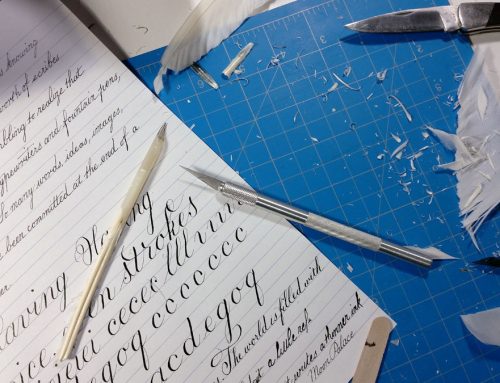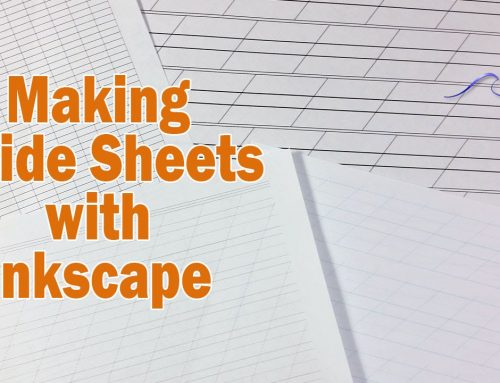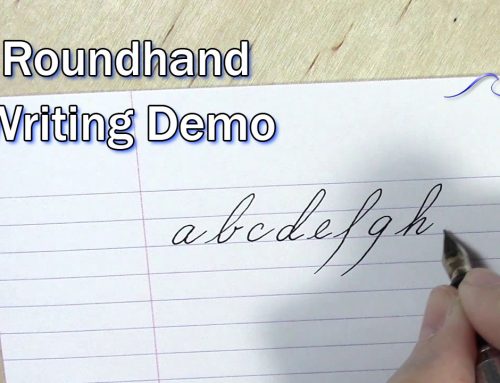I had never used a quill pen. Despite having dabbled and practiced with calligraphy since I was a teen some mumblemumble years ago, my experience was pretty much limited to dip pens with metal nibs and calligraphy fountain pens. I figured the time had come to correct that incomplete education.
Quill were the primary writing instrument, at least in Europe and its empired regions, for about 1300 years. It is, therefore, probably the most “honest” writing experience you can have if you want to share the experience of artists, saints, sinners, diplomats, scared conscripts, and just about everyone else who was literate during that span.
I ordered some uncut goose quills. I got them cured (heat treated) so I had a baseline for when I did it myself. Then I basically did what the Internet told me to do. Most web pages and videos describe square-cut nibs, but having used steel nibs for years, I knew the adjustments to make for a pointed nib so I could write in a familiar hand. Here’s the result (click on it to enlarge):
 The text was my first test of its writing ability. It’s done with Moon Palace sumi ink on a scrap of Bristol board. Based on what I’d seen in videos, I was expecting a hot mess. Instead, I got something very reasonable for a first attempt. Some of that was serendipity.
The text was my first test of its writing ability. It’s done with Moon Palace sumi ink on a scrap of Bristol board. Based on what I’d seen in videos, I was expecting a hot mess. Instead, I got something very reasonable for a first attempt. Some of that was serendipity.
Subsequent testing revealed that ink makes a huge difference in the quality of the writing. I tried my favorite sumi ink, Best Bottle, and it refused to write on untreated paper — and pretty much only as hairlines on treated paper. Since they were in reach, I tried Noodler’s X-Feather, to overly gushing results, and Noodler’s Black, which was almost as good as Moon Palace. Even with this small sample, it’s clear that the ink is at least as big of a variable in the experience as the quality of the pen. Clearly, more experimentation is needed — which gives me an excuse to get an old-world recipe iron gall ink. (Yay)
Something I did do differently when I was fine-tuning the nib’s point was switch from knives to sandpaper. I’ve yet to read of anyone using sandpaper, but I have to say it made that part of the process a lot easier and more accurate. This is yet another area for experimentation; e.g. can I use a Dremel tool?
Overall, I’m enjoying this experience. With the right ink, and paper prepped with gum sandarac, the act of writing is delightful. It’s smooth, soft, and mostly well-behaved. I’m definitely going to be growing my experience with this. Even so, I’d love to know if there is some synthetic equivalent to the vane of the quill — dealing with formerly-attached-to-the-bird parts does give me pause. If there is a plastic/resin/composite/whatever that can be carved like a quill and yet gives the same tactile and practical experience, I’d like to try it out.
Don’t be afraid to give quills a try. The only truly difficult part about it is that we live in the 21st century and untreated goose/turkey/etc. quills of a usable size aren’t the easiest things to find at a good price.





